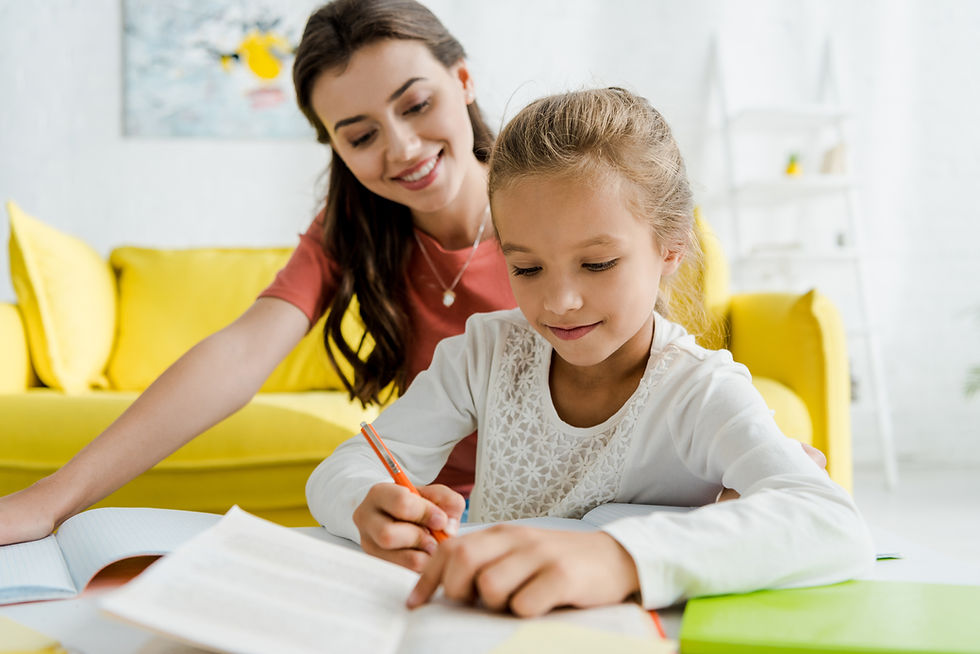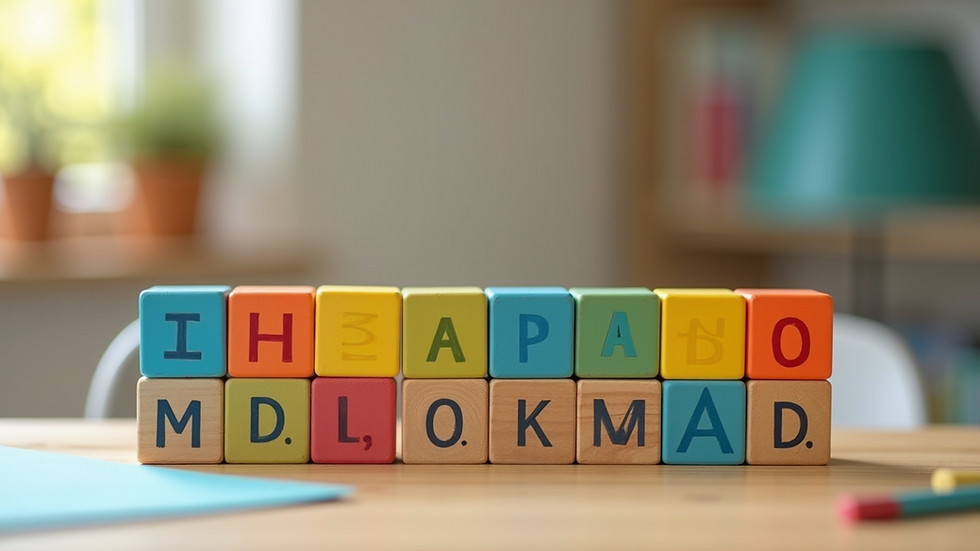Creating a Positive Learning Environment at Home
- Jul 17, 2024
- 3 min read
As parents and caregivers, we all want our children to succeed academically and feel happy and fulfilled. Creating a positive learning environment at home is crucial to achieving this goal. Here are some tips and strategies to help your child thrive:
Tips for Setting Up a Distraction-Free Study Area
1. Designated Study Space: Create a specific area in your home where your child can focus on their studies without interruptions. This space should be free from distractions like TV, toys, and high-traffic areas.
2. Well-Lit and Comfortable: Ensure the study area is well-lit with natural light if possible. Good lighting can improve mood and concentration. Additionally, provide comfortable seating and a suitable desk to maintain good posture and prevent discomfort.
3. Organized Materials: Keep school supplies and materials organized and within reach. Use bins, shelves, and desk organizers to create a clutter-free environment, making it easier for your child to find what they need and stay focused on their tasks.
The Importance of Natural Light and Ergonomic Furniture
1. Natural Light Benefits: Natural light not only helps with mood and concentration but also supports the body's natural circadian rhythms. Position your child's study area near a window to take advantage of daylight, which can enhance their overall well-being and academic performance.
2. Ergonomic Furniture: Invest in ergonomic furniture that supports good posture and reduces physical strain. An adjustable chair and a desk at the appropriate height can prevent discomfort and promote longer periods of focused study.
3. Optimal Arrangement: Arrange the study area to minimize distractions and maximize productivity. Ensure the desk is facing away from potential interruptions and keep the area tidy to create a conducive learning environment.
Encouraging Your Child to Self-Regulate Their Emotions with the 4-Quadrant Scale
A key component of optimizing your child's learning is helping them manage their emotions effectively. Introducing the 4-quadrant emotional regulation scale can be a powerful tool:
- Top Left Quadrant (Fight or Flight Response): When your child is upset, angry, or frustrated, they are in the fight or flight mode.
- Bottom Left Quadrant (Withdrawn): When your child wants to be left alone and is feeling withdrawn.
- Top Right Quadrant (Thrive Mind): When your child is happy, learning, playing, and having fun.
- Bottom Right Quadrant (Calm, Meditative State): When your child is calm, in a meditative state, and in the zone.
If you notice your child is in the left-hand side quadrants, use these simple strategies to help them return to thriving:
1. Belly Breathing: Encourage your child to imagine a balloon in their belly. Ask them to choose a color for the balloon. Have them breathe in for 3 seconds, imagining the balloon inflating, and then release the breath for 6 seconds, visualizing the balloon deflating. Continue this until a sense of calmness sweeps over them.
2. Dance it Out: Play some music and have a dance party! Dancing can help change the emotional state and bring joy. Dance together until the negative emotions transform into laughter and readiness to learn again.
3. Seek Help When Needed: If the homework or task is too tricky or tough, remind your child that it's okay to ask for help. Encourage them to approach their teacher the next day with any questions or difficulties.
Creating a positive learning environment at home involves more than just setting up a study space. By fostering an atmosphere of emotional regulation and support, you can help your child navigate their academic journey with confidence and joy.
For all the events offered here at Thrive Mind Coaching click to get started.




Comments